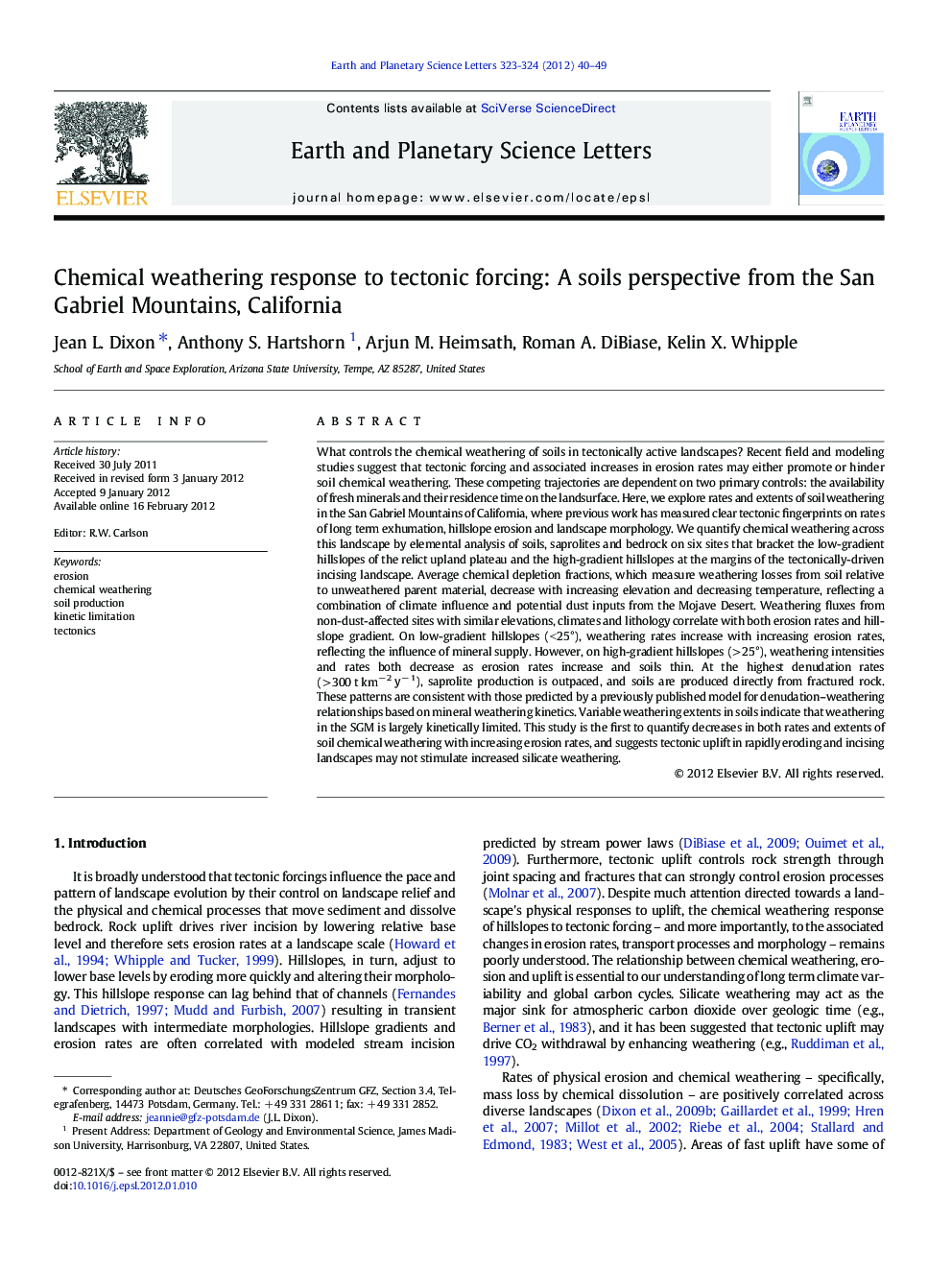| Article ID | Journal | Published Year | Pages | File Type |
|---|---|---|---|---|
| 4677554 | Earth and Planetary Science Letters | 2012 | 10 Pages |
What controls the chemical weathering of soils in tectonically active landscapes? Recent field and modeling studies suggest that tectonic forcing and associated increases in erosion rates may either promote or hinder soil chemical weathering. These competing trajectories are dependent on two primary controls: the availability of fresh minerals and their residence time on the landsurface. Here, we explore rates and extents of soil weathering in the San Gabriel Mountains of California, where previous work has measured clear tectonic fingerprints on rates of long term exhumation, hillslope erosion and landscape morphology. We quantify chemical weathering across this landscape by elemental analysis of soils, saprolites and bedrock on six sites that bracket the low-gradient hillslopes of the relict upland plateau and the high-gradient hillslopes at the margins of the tectonically-driven incising landscape. Average chemical depletion fractions, which measure weathering losses from soil relative to unweathered parent material, decrease with increasing elevation and decreasing temperature, reflecting a combination of climate influence and potential dust inputs from the Mojave Desert. Weathering fluxes from non-dust-affected sites with similar elevations, climates and lithology correlate with both erosion rates and hillslope gradient. On low-gradient hillslopes (< 25°), weathering rates increase with increasing erosion rates, reflecting the influence of mineral supply. However, on high-gradient hillslopes (> 25°), weathering intensities and rates both decrease as erosion rates increase and soils thin. At the highest denudation rates (> 300 t km− 2 y− 1), saprolite production is outpaced, and soils are produced directly from fractured rock. These patterns are consistent with those predicted by a previously published model for denudation–weathering relationships based on mineral weathering kinetics. Variable weathering extents in soils indicate that weathering in the SGM is largely kinetically limited. This study is the first to quantify decreases in both rates and extents of soil chemical weathering with increasing erosion rates, and suggests tectonic uplift in rapidly eroding and incising landscapes may not stimulate increased silicate weathering.
► We examine weathering in landscapes with different degrees of tectonic forcing. ► Soil elemental losses decrease as hillslope gradients exceed 25°. ► Weathering rates are positively correlated with erosion on low gradient slopes. ► High erosion rates on steep slopes result in low weathering rates. ► Mineral dissolution and weathering are kinetically limited.
